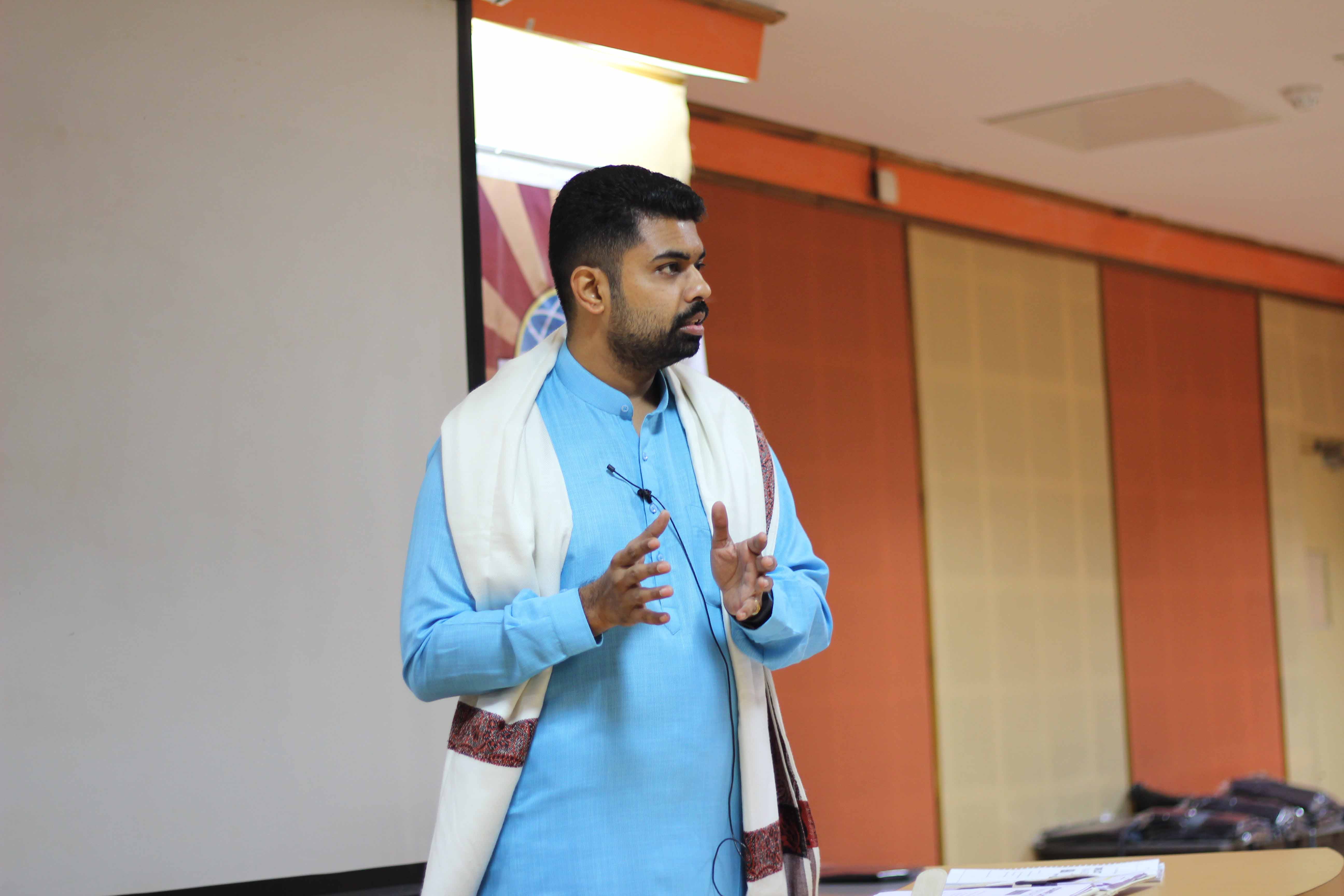May 30, 2022
Dr. Chandrashekar DP, Chief Executive Officer, JGI Schools
In conversation with Chandrashekar DP, CEO, JGI Group of Schools, on schools undergoing changes under the present scenario, and the steps needed to be taken by schools and every stakeholder to support students’ best interest.
![]() Your mission is to impact one million children and to build a better schooling system in India. Tell us more about JGI Schools as a role model, and a way to achieve that grand goal.
Your mission is to impact one million children and to build a better schooling system in India. Tell us more about JGI Schools as a role model, and a way to achieve that grand goal.
As a CEO of the JGI Schools, my primary focus is to empower my educators to become compassionate facilitators and encourage the young minds to transform their inherent potential into reality. A lion’s share of my day goes in mentoring, motivating and meeting my team. I believe that true success is accomplished when we move together towards tomorrow. Thus, collaboration and consultations are very integral towards realising the vision of impacting 1 million children and building a better schooling system in India.
In all our 30+ schools at JGI, we focus on democratising leadership and enabling systems to deliver every team member towards their refined version. We have deliberated and decided on a plan to achieve our goal of 1 million and we are constantly evolving by leveraging technology, striking sustainable partnerships and building our capacities.
…schools are no longer spaces for learning, but they have become spaces for deliberating, discussing and doing things. Schools are not merely a collection of students and teachers walking the physical dimensions, instead schools have become a zone for clarifying values, examining life skills and developing socio-emotional quotients for all stakeholders….
![]() As the CEO of JGI Schools, you have 30+ schools under your leadership. One can safely assume that managing such an expansive organisation is not a walk in the park. The past two years have brought many big changes in the schooling system, and now with things coming back to normal, what new course of action have you planned for JGI Schools? What aspects of hybrid learning and teaching will eventually get incorporated in the present ‘Back-to-School’ scenario?
As the CEO of JGI Schools, you have 30+ schools under your leadership. One can safely assume that managing such an expansive organisation is not a walk in the park. The past two years have brought many big changes in the schooling system, and now with things coming back to normal, what new course of action have you planned for JGI Schools? What aspects of hybrid learning and teaching will eventually get incorporated in the present ‘Back-to-School’ scenario?
The last two years have given us enough food for thought to refocus on the future. Things changed drastically over the last 24 months and some of the things that were prevalent pre-pandemic are not going to return. This realisation has made the entire team more agile and adaptable. We are constantly asking the “why” question and it has delivered us some amazing answers.
Blended learning and Hybridisation of our classrooms are widespread, but what is more visible is the awareness that nothing is constant and change will be rapid in the current day schooling system. Our teachers are self-sufficient leaders who no longer are restricted to their syllabus and subjects, our administrators are having their innovation caps “on” constantly and our schools are focussing on newer ways to ensure that the learning and the learner are more engaged. We have identified these ten priorities for 2022 as we return back to physical schools across JGI.
1) First (A) Abraham Maslow, then (B) Benjamin Bloom - Mental wellness and Socio Emotional Learning must take priority in all our schools over enhancing cognitive capacities of our students. This is the need of the hour as we crawl back into the physical schools after two years of pandemic-imposed school closures.
2) Push for Efficiency in the New Normal - Blending/Hybrid Learning, Flipped Classrooms and Remote Work Culture has pushed us towards redefining critical success parameters. We must push for efficiencies by renewing our Standard Operating Procedures (SOP’s) to suit the changing work culture.
3) Sports & Physical Education - Schools should be the beacon light to foster movement and impart physical literacy among students. The time is here and now.
4) Design Thinking in decision making - This powerful approach towards problem solving calls for focus, attention, understanding, insight, excellence in cognition and clarity. This will be the playbook for leaders in today’s Volatile, Uncertain, Complex and Ambiguous (VUCA) world.
5) Learning Levels and Filling Learning Gaps - Loss of learning is caused not just because of school closures but also due to forgotten learning. This will be a major area to focus for the next two academic cycles at the least.
6) Inspect what you expect - To all leaders, this should be your new mantra. Measuring what you wish for in your schools is the only way to achieve it.
7) Retailing of Knowledge Delivery - Pandemic has taught us that learning can happen anytime, and anywhere. This puts the ball back in your court to ensure that your learners have enough opportunities to learn through video lessons, interactive experiences and at their pace. Creating Teaching Learning Materials, Online Courses are the way forward.
8) The real question would be - How much is too much? As far as screen time is concerned. - Screen time is like a habit; it cannot be removed but can be replaced. Educate your stakeholders to prioritise their screen time and move forward.
9) Mitigate the Matthew Effect - Bridge the gap between the haves and the have-nots. In every school there will be a set of individuals who cannot get access to everything at every time. Bring in systems and sensitivity to mitigate the Matthew Effect.
10) Examinations and Assessments will undergo a change - The less I say about this, the better as it is the most disrupted area in current day schooling and sky's the limit towards shifting from assessment of learning to assessment for learning.
![]() What will schools look like in the future?
What will schools look like in the future?
Although the schools in the future will look similar to what it is today from “outside-in,” the transformation has already begun from “inside-out.”
Schools are no longer spaces for learning, but they have become spaces for deliberating, discussing and doing things. Schools are not merely a collection of students and teachers walking the physical dimensions, instead schools have become a zone for clarifying values, examining life skills and developing socio-emotional quotients for all stakeholders.
Schools of today will begin to focus less and less on syllabus completion and examinations but will focus more on preparing learners for crisis management and learning to be, do and love. Globally the focus has shifted towards taking initiative and involvement and schools are the fundamental units that will provide the building blocks.
![]() How is JGI Schools following up with the New Education Policy 2020?
How is JGI Schools following up with the New Education Policy 2020?
At JGI we are NEP ready since 2018. However, I would like to add that we are a “work-in-progress.” NEP 2020 has provided us with a framework to go beyond the transactional issues that cloud the decision making in a regular school to explore, imagine and learn newer ways of creating value for the learner. I must admit, this is consuming most of our time at JGI Schools. Our R&D teams and training division is busy rolling out modules and programs for all teachers, staff and parents on pedagogy and personal touch, holistic development and classroom management, involvement of parents with school traditions and cultural values, and a 360 degree child-centric curriculum.
![]() The elephant in the room – the digital divide between the Haves and Have- Nots. Is equal educational opportunity still a possibility for students of all sections of the society?
The elephant in the room – the digital divide between the Haves and Have- Nots. Is equal educational opportunity still a possibility for students of all sections of the society?
Yes, mitigating the ‘Matthew Effect,’ as I have said earlier, is one of the responsibilities of each and every educator and school in the country. We should not mistake it for Corporate Social Responsibility, but we should consider it as our Duty. India is a country of many challenges and opportunities. As schools who are operating in the geographic boundaries of the country, we have to look at this problem not as a dead-end, but as a bend. By bend – I mean, bending the prejudices and rigidity that exists in society. For long, we have sat by the side-lines as mute spectators and expected the government to change the reality for us. Now the time has come to get into action.
Every school should open their classrooms and computer labs for children in their communities and encourage them to utilise their resources during evening hours and weekends and allow access to the repository of teaching learning materials and digital resources developed over the last 2 years. Technology has empowered every private school in the country, now it’s time to expand our circle of influence to those who cannot access.

![]() How has education changed in response to social forces?
How has education changed in response to social forces?
Education has become more inclusive, less structural and expanded its utility due to the social forces that are prevalent globally.
![]() Chandrashekar–TEDx Speaker, Author, CEO, Edupreneur and one of the Global Leaders in the field of education, all that at such a young age. You are a role model to not only India's youth, but also to the global youth. Tell us how and when does a person transition from just existing in the system to becoming a leader in his or her field.
Chandrashekar–TEDx Speaker, Author, CEO, Edupreneur and one of the Global Leaders in the field of education, all that at such a young age. You are a role model to not only India's youth, but also to the global youth. Tell us how and when does a person transition from just existing in the system to becoming a leader in his or her field.
Everyone has in them immense power to make a difference. This starts first with your house, then your office, later your entire organisation. Once this process begins, the circle starts expanding and more and more people are touched by the positivity of your work. This is what happened to me as well. So, I guess the answer really lies in keeping your head down and doing your best. As long as you are doing this, the titles, accolades and the following is nothing more than increased responsibility on your shoulders.


